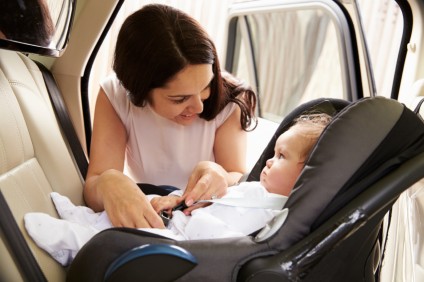In the last 30 years we have engaged in a huge public health campaign to increase the use of car seats. Not only have we spent millions, we’ve enacted laws that actually make it illegal for parents to drive infants without buckling them into car seats.
The campaign has been spectacularly successful. According to the Insurance Institute for Highway Safety, from 1975 to 2013, infant fatalities fell from 6/100,000 to 1.3/100,000 while car seat use rose to 99% of children under age 1. Of course car seat use is the not the only reason why infant fatalities dropped; cars themselves are safer, but the use of car seats has played an important role.
[pullquote align=”right” color=””]Out of hospital birth has a death rate more than 50X higher than failing to put an infant in a car seat.[/pullquote]
Forgoing car seat use for infants is not merely illegal, it is social anathema. Who would defend a mother who chooses not to use a car seat for her infant. No one, right? Who would claim that the risk of not using a car seat is so small that it should be left to the mother’s choice? No one, right?
Yet, as I wrote last week, a paper in The New England Journal on out of hospital birth suggested that the increased risk of giving birth outside a hospital was small.
Small is a relative term. That’s why it is instructive to compare the risk of refusing to use a car seat with the risk of giving birth outside a hospital.
I’ve attempted to do that in the graph below:
The graph reflects information from the Insurance Institute for Highway Safety and the data from the NEJM paper.
Even a cursory glance reveals an inconvenient truth (inconvenient for natural childbirth advocates that is). Childbirth, even for low risk women with singleton term babies in the head first position is inherently dangerous. Infants who are unrestrained had a death rate of 4.6/100,000 whereas the infants of low risk women faced a death rate of 106/100,000 even in a hospital. Childbirth is 100X more dangerous than failing to restrain an infant in a car seat.
The graph actually dramatically understates the risk. The automobile fatality data reflects deaths per 100,000 children, most of whom rode in cars multiple times. The per trip mortality rate is substantially lower. Furthermore, the birth data is from low risk women. The true gulf between automobile infant deaths and deaths from childbirth is probably another order of magnitude.
The graph also shows that the risk of death for an infant riding in a car is actually very small, whether riding in a car seat or not (1.3/100,000 vs. 4.6/100,000). Nonetheless, we value the lives of our infants so much that we are willing to spend millions of dollars and enact laws in all 50 states to protect them from this small increase.
In contrast, there’s a much larger difference between delivering a baby outside a hospital vs. in a hospital (258/100,000 vs. 106/100,000). If 100,000 mothers of infants chose to drive with their infants unrestrained, there would be an absolute increased risk of 3 infant deaths per year. If 100,000 low risk women chose to give birth outside the hospital, however, there would be an absolute increased risk of 152 deaths!
That doesn’t change the fact that it is up to each woman to decide for herself where to give birth. But it does suggest that the increased risk of death at out of hospital birth isn’t small after all.
Simply put, no one could call the failure to buckle an infant into a car seat a safe choice. If no one would call that choice safe, no one should call the choice to deliver outside a hospital, which has an absolute increased risk of death that is 50X higher, a safe choice.



